
The Bottom Line
Pros
- + Price
- + Picture quality
- + In-game performance
- + Build quality
Cons
- - Aesthetics
- - Some gimmicks
- - Zero USB ports
- - 5ms response time
- - Speakers
Should you buy it?
AvoidConsiderShortlistBuyIntroduction & Specification Details and Close-up
ASRock has released a new gaming monitor under its Phantom Gaming brand, showcasing the latest of its efforts to enter the gaming monitor market more competitively.
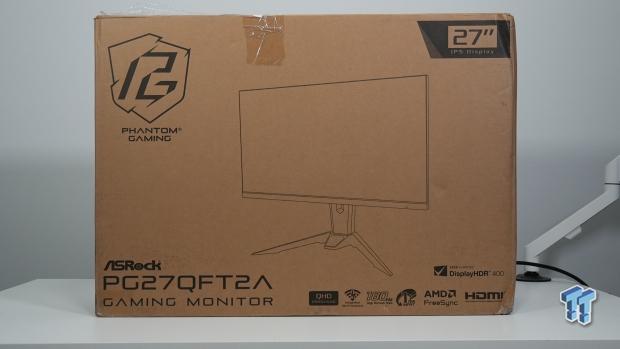
Introducing the ASRock Phantom Gaming PG27QFT2A, a 180Hz refresh rate gaming monitor with a 2560 x 1440p (QHD) resolution across 27 inches and a 5ms response time for under $200. Yes, that's right. You can get a QHD gaming monitor above 144Hz for under $200 - a deal that I couldn't believe when I saw it on Newegg for $184.99.
With the PG27QFT2A's IPS panel, we don't get any of those rich colors at the level of OLED pixel technology that's currently flooding into the market, but what we do get is the absolute barebone, necessary specifications to make a very affordable QHD gaming monitor. So, let's find out where ASRock made concessions with the PG27QFT2A, identify its strongest aspects, and find what type of gamer would be best suited for such an incredibly priced gaming monitor.
Specifications
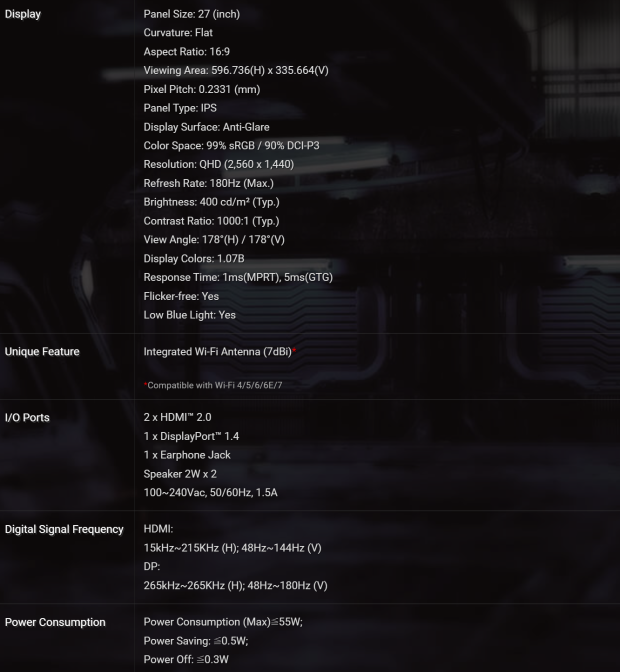
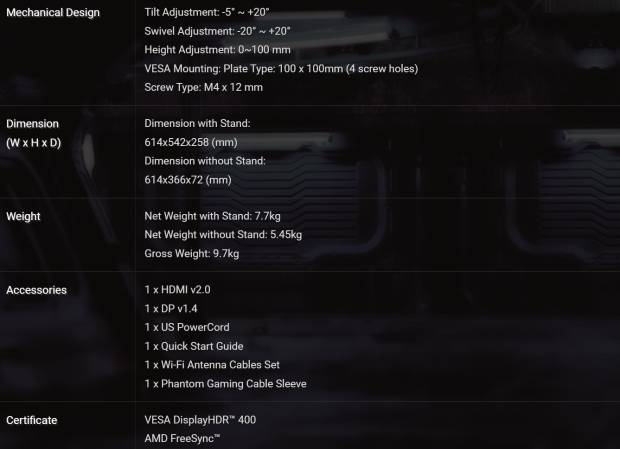
Close-up
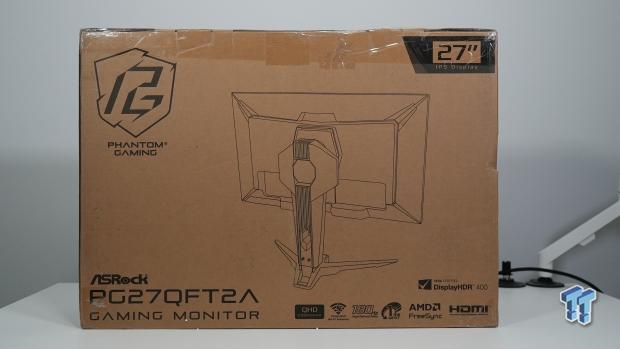
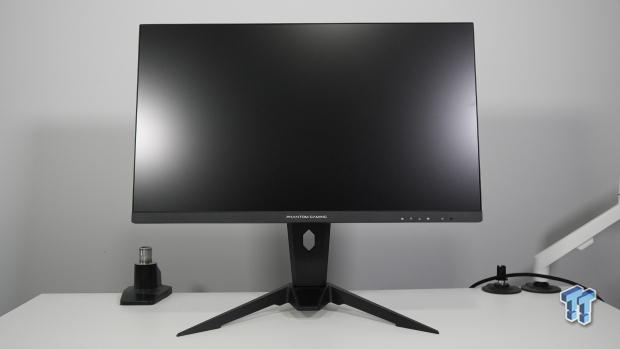
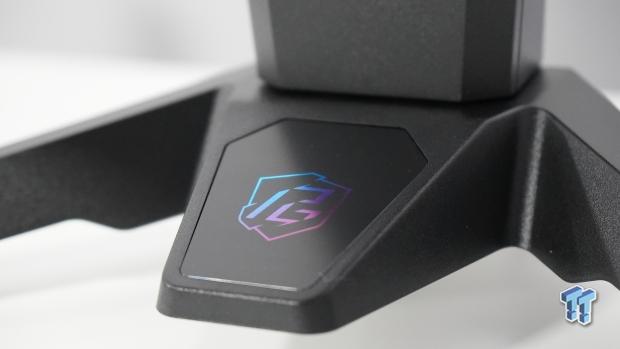
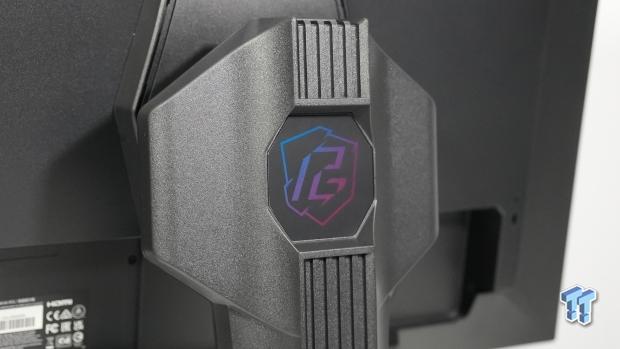
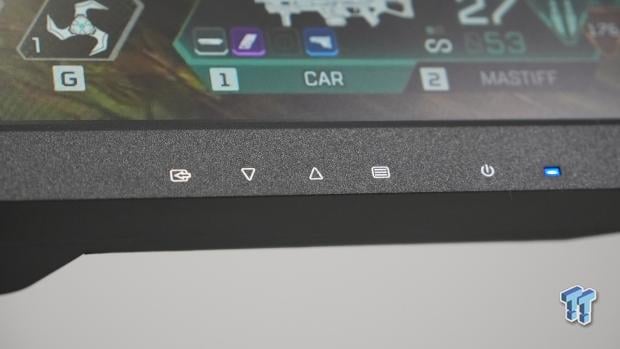
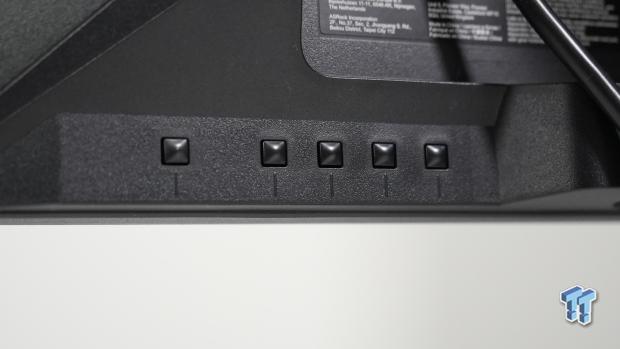
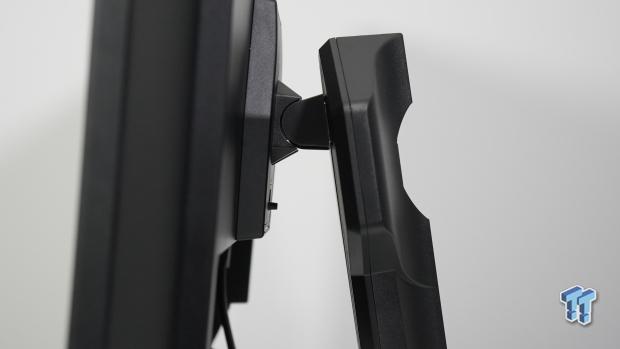
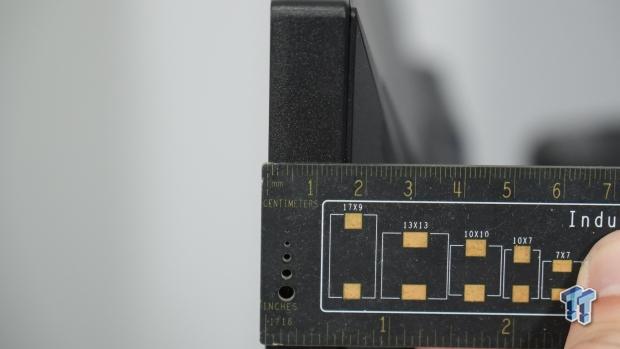
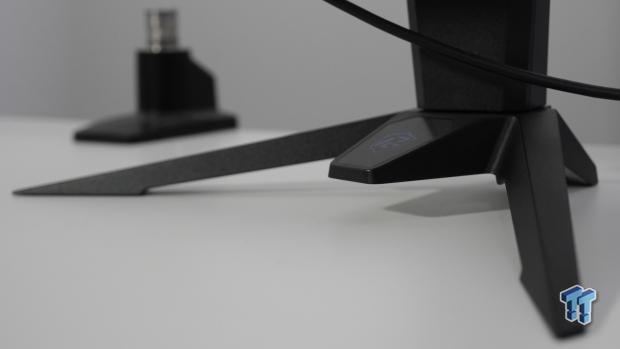
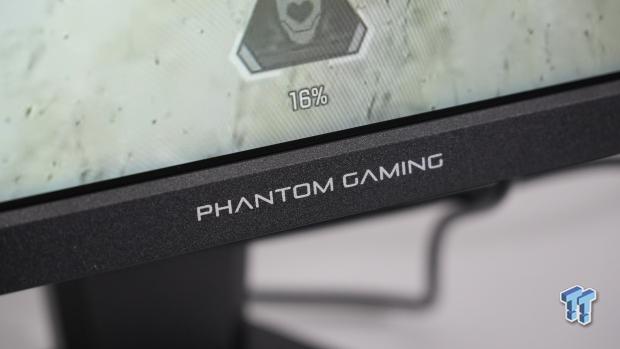

Design
The physical design of the PG27QFT2A embodies everything you would expect out of a basic gaming monitor. The panel is housed in a hard plastic enclosure that has a very minimal aesthetic with no engravings. Located at the bottom center of the PG27QFT2A is the branding "Phantom Gaming", which to its right is symbols representing options to navigate the OSD options. These can be accessed by the corresponding buttons located behind the monitor.
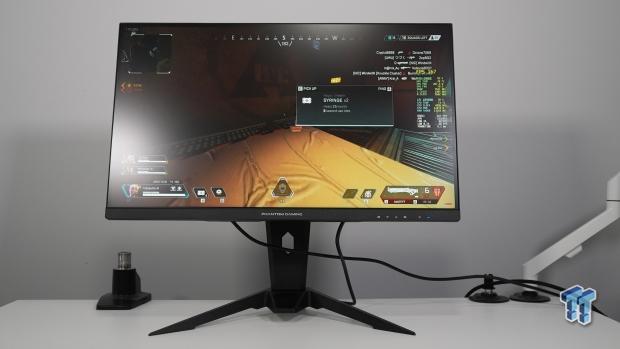
Most gaming monitors coming to the market feature a single multi-directional joystick, or a multi-directional joystick and additional buttons - hardly ever just buttons. This is no downside to the PG27QFT2A as its buttons are quite nice, as they provide a soft, clicky feel upon press and enable easy navigation through the PG27QFT2A's OSD. On the far right-hand side of the monitor, there is a power LED, indicating when the monitor is powered on and in standby mode.
Moving to the back of the monitor, there is no branding on the rear side of the panel, only a Phantom Gaming logo on the back of the stand. It's clear the goal of the PG27QFT2A is to spend the designated build budget for a single unit of the PG27QFT2A on hardware that powers games, leaving very minimal for aesthetics. Connectivity, ASRock has, again, outfitted the PG27QFT2A with very little: 1x DisplayPort 1.4, 2x HDMI 2.0, and a 1x 3.5mm headphone output. There aren't any USB ports of any kind. The two speakers included are also only 2W, making for a very dismal listening experience.

The stand is quite bulky and reasonably heavy - I wouldn't worry about the PG27QFT2A accidentally tipping over from a desk being bumped. While it does give the monitor more stability, the V-shaped feet design isn't my favorite, as some gamers only have limited desktop space, meaning there isn't a whole lot of room for mouse movement. Having a V-shaped stand runs the risk of a gamer slamming their mouse into the feet of the stand. With that being said, the PG27QFT2A didn't have this problem throughout my testing. ASRock has decided to make something unique about the PG27QFT2A, and that is the inclusion of an integrated Wi-Fi antenna that's compatible with Wi-Fi 4/5/6/6E/7. The idea behind making the PG27QFT2A's stand a Wi-Fi antenna is to help gamers who have their Wi-Fi antennas below their desk.
ASRock believes utilizing its antenna will improve internet connection stability as the signal now doesn't have to pass through a tabletop. From my testing, I found that my speed was the exact same on both my normal antenna and my PG27QFT2A. I believe the feature would only really be useful if your tabletop was a material that Wi-Fi signals struggle to pass through, such as metal, but perhaps in some pinch situations, it may be a lifesaver. I'm not 100% sold on it, but I can imagine it being utilized in some very unique cases, and in those cases, it would likely make a significant difference.
Panel Breakdown
The PG27QFT2A uses an IPS panel that provides quite impressive color accuracy and visuals, especially considering the price of sub-$200. ASRock has slapped HDR 400 onto the PG27QFT2A, and I can say that I've seen worse implementations of HDR in more expensive monitors. There are also additional features such as AMD FreeSync, Anti-Glare coating, a typical brightness of 400 nits, and decent color space coverage with 99% sRGB / 90% DCI-P3.
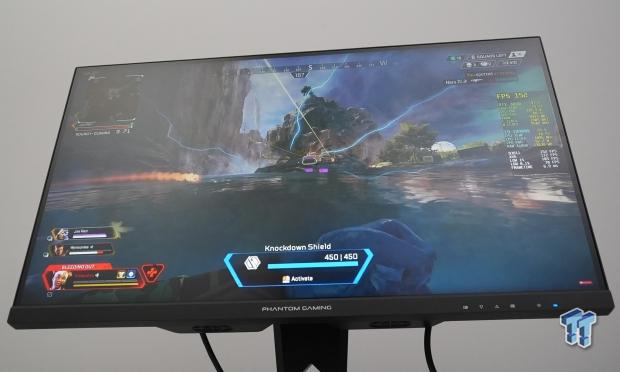
Users will be presently surprised by the color quality of the PG27QFT2A, which can be changed in the OSD settings. There aren't many settings to play with, but what can be changed is right in front of you and clearly laid out. There are no unnecessary hoops and pages to dive through just to get to the brightness setting of the monitor, and with a tiny bit of tweaking, you can really improve the PG27QFT2A's image quality. I personally slightly increased the brightness, but I would adjust it to your own preferences and setting. Additionally, the PG27QFT2A arrives very evenly balanced right out of the box.
Performance
As with all of my gaming monitor reviews I take the monitor I have under the microscope through a variety of different games to determine what type of gamer is best suited for the gaming monitor I'm reviewing. The PG27QFT2A was used to play the following titles for multiple hours: Age of Empires IV, Overwatch 2, Apex Legends, Elden Ring, Helldivers 2, and Cyberpunk 2077.
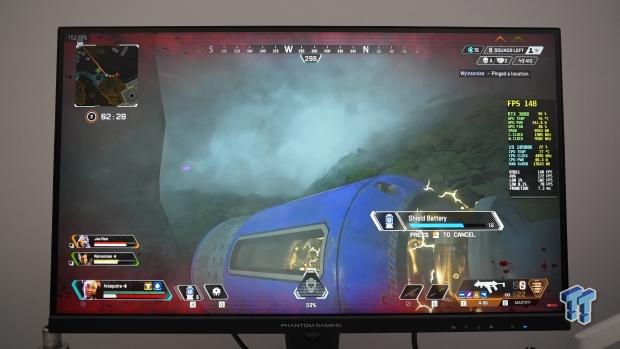
The PG27QFT2A provided a solid experience in all of the aforementioned titles, providing excellent and seemingly very accurate color and a consistent refresh rate of 180Hz (in games that it was possible). It became quickly clear the 27-inch size and QHD resolution at 180Hz meant first-person-shooter titles rose to the top of the games the PG27QFT2A performed the best in. I didn't notice a single tear throughout the many hours I spent with the PG27QFT2A in Overwatch 2 and Apex Legends. The experience was consistent and, in some ways, better than average for a QHD gaming monitor with an above 144Hz refresh rate.
The only downside I could give the PG27QFT2A when it comes to gaming is the 5ms response time. This truly a big hit for me, especially coming from 0.03ms, and 1ms. However, this a concession I would be willing to make for what you are getting with the PG27QFT2A.

Final Thoughts
So, should you buy the PG27QFT2A? I would recommend the PG27QFT2A to someone who wants to make the jump to 2560 x 1440p gaming at 144Hz and above but doesn't want to break the bank to do it.
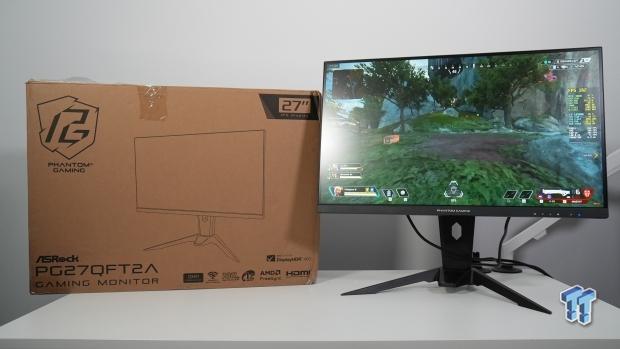
The PG27QFT2A is probably the best budget QHD gaming monitor with a refresh rate above 144Hz, decent HDR, and a price under $200. Nothing has come across my radar quite like the PG27QFT2A. A gamer will get everything that I would consider the barebones specifications to make a gaming monitor a worthwhile purchase: resolution, refresh rate, image quality, and a decent price.
While the PG27QFT2A does drop the ball in some aspects, such as the 5ms response time thanks to the IPS panel, pretty awful speakers, a strange Wi-Fi antenna, no USB ports, and hardly any aesthetics, it achieves exactly what ASRock intended it do - and I like that very much. The PG27QFT2A was even impressive in word processing tasks, such as writing this review, but it truly shined in fast-paced first-person-shooter titles that can take advantage of that 180Hz refresh rate.
The PG27QFT2A would be great for any gamer looking to upgrade to QHD at high refresh rates but doesn't want to spend the $900 on an OLED gaming monitor. The PG27QFT2A performs appropriately for its price in any game that could be thrown at it, but FPS gamers will particularly enjoy it.
For under $200, you can now get a 2560 x 1440p (QHD), 180Hz refresh rate gaming monitor with better-than-average picture quality, HDR that actually works, and smooth, tearless gameplay. The Phantom Gaming PG27QFT2A is truly impressive for its price and shouldn't be overlooked when considering a budget QHD gaming setup.




